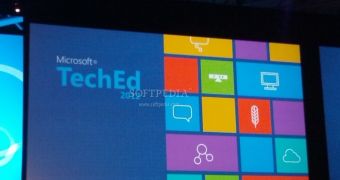This week, Microsoft made available for download a second beta version of its User Experience Virtualization (UE-V), in conjunction with kicking off the 2012 TechEd EMEA conference in Amsterdam.
Through this release, the Redmond-based software giant is making it simple for companies to come up with more flexible workstyles for their employees.
The new release of UE-V comes along with a variety of new features, including support for roaming system settings between Windows 7 and Windows 8.
“It also arrives with support for additional operating system settings including Start menu, Taskbar and folders options; group policy support to ensure agent configuration consistency, and the roaming and sync of settings between Internet Explorer 8, 9 and 10,” Karri Alexion-Tiernan explains.
“We’re excited about these additions to UE-V as they further enable people to change their device and keep their experience.”
During a presentation of UE-V at the TechEd EMEA 2012 conference, Karri Alexion-Tiernan, director of product marketing for Desktop Virtualization and Microsoft Desktop Optimization Pack, told Softpedia that the latest changes made to the product are meant to make it more personal and flexible.
Through enabling the roaming of applications and OS personalization, users will benefit from the same environment on all of their computers. This also includes the latest changes they made to applications and settings, of course.
What's even better is that the synchronization between settings is made gradually, which should result in a far better response time than before.
In fact, she explained that it would eliminate the long waiting times when signing in on a computer, and that the synchronization can also be set to kick in when triggered by specific actions on a computer, such as closing the application or locking the screen.
UE-V also offers integration with all desktop virtualization solutions from Microsoft, and it can offer support for templates to ensure even more simplicity and versatility of its syncing capabilities. Additionally, the tool also can roam from a physical application to a virtual one.
At the moment, the focus is on offering full compatibility with Windows 7 and Windows 8. Older operating systems are not supported at the moment, and they might never be, Karri Alexion-Tiernan told us.

 14 DAY TRIAL //
14 DAY TRIAL //